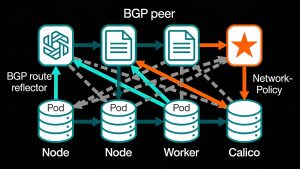Understanding the Scope of Full-Stack Mobile App Design
Designing a full-stack mobile application involves considering every aspect of the user journey—from the initial visual impression to seamless performance and accessible support channels. Each platform, whether iOS or Android, brings unique expectations that must be addressed to deliver a consistent and engaging experience.
Modern mobile apps have evolved to meet increasingly sophisticated user demands. Developers and designers must incorporate a range of critical elements to ensure a robust and satisfying user experience, including:
- Smooth loading animations for both initial and subsequent app launches
- Responsive and adaptive layouts that adjust to various device sizes and orientations
- Platform-specific fonts and iconography for a native look and feel
- Consistent branding across all devices and platforms
- Effective caching and data persistence mechanisms
- Reliable offline functionality and graceful handling of network interruptions
- Asynchronous UI updates for a fluid, interactive experience
Distinctive Aspects of Mobile App Design
While certain design principles overlap between web and mobile applications, key differences must be acknowledged. Elements such as application structure, form controls, typography, component rendering, and navigation require tailored approaches for each environment.
Comparing Web, Mobile Web, Hybrid, and Native Mobile App Design
The evolution from traditional web design to mobile-centric approaches has been driven by the shift in user behavior and advances in technology. While web designers once relied heavily on print design principles, today’s mobile app designers often draw from both web and print backgrounds. Recognizing the similarities and differences between these environments is crucial for effective app development.
- Web Design: Traditionally focused on desktop browsers, web design now emphasizes mobile-first responsive layouts, given that most users access content via mobile devices. Features like mouse hover are replaced by touch and multitouch events, and orientation changes are managed through CSS media queries and JavaScript.
- Mobile Web: Refers to browser-based content optimized for mobile devices, often embedded within native app views for enhanced flexibility.
- Hybrid Design: Bridges the gap between web and native app development by leveraging frameworks like React Native or Apache Cordova. These tools allow developers to create mobile apps using familiar web technologies, which are then translated into native components for each platform.
- Native Mobile App Design: Involves building apps specifically for iOS or Android using platform-specific tools and languages. This approach provides the highest level of integration with device features and ensures optimal performance and user experience.
Core Mobile Design Methodologies
To deliver a polished mobile app, designers should adopt several key methodologies:
- Responsive Design: Ensures that the app interface adapts fluidly to different screen sizes and orientations, providing a consistent experience across devices.
- Adaptive Design: Utilizes fixed layouts tailored to specific resolutions, offering precise control over the app’s appearance on various devices.
- Progressive Design: Focuses on quick loading times and seamless authentication, often seen in progressive web apps.
- Mobile-First Approach: Prioritizes the needs of mobile users from the outset, ensuring that smaller screens receive the highest quality design.
- Offline-First Strategy: Equips the app to function reliably without a network connection, using local storage and background synchronization to maintain usability.
Addressing Device and Platform Diversity
Mobile app designers must account for a wide range of device characteristics, including aspect ratios, display resolutions, bandwidth, and power constraints. For instance, some vendors offer lightweight versions of their apps to cater to users with limited connectivity or device capabilities.
Key physical and design considerations include:
- Device size and orientation
- Operating system-specific guidelines and requirements
- Presentation of navigation, forms, and custom elements
- Font and typography preferences unique to each platform
Navigation and Layout Hierarchies
The organization of an app’s interface—its layout and navigation structure—plays a pivotal role in usability. Designers must decide how to structure pages, views, and components, as well as how to implement navigation patterns such as tabbed or stacked navigation. Platform conventions often dictate navigation placement (e.g., top for iOS, bottom for Android), and touch targets should meet minimum size guidelines for accessibility.
Platform-Specific Styling and Components
- iOS: Utilizes controllers, views, and storyboards, with navigation typically placed at the top. Apple provides detailed guidelines for fonts and UI elements.
- Android: Employs activities, containers, and layouts, with navigation often found at the bottom. Material Design principles guide typography and component usage.
- Cross-Platform: Frameworks like React Native and Cordova allow for shared codebases but require careful adaptation to meet the nuances of each platform.
Maintaining Brand Consistency
An app’s identity should remain consistent across all platforms while respecting device-specific conventions. Designers must balance the need for a unified brand experience with the unique requirements of each operating system.
Best Practices for Modern Mobile App Design
- Emphasize user experience: Prioritize intuitive navigation, fast load times, and responsive interactions.
- Optimize for multiple devices: Test designs on a variety of screen sizes and resolutions to ensure compatibility.
- Leverage platform guidelines: Follow Apple’s and Google’s design standards for a familiar and trustworthy user experience.
- Plan for offline and low-connectivity scenarios: Implement robust caching and offline capabilities to prevent disruptions.
- Regularly update and refine: Continuously monitor user feedback and analytics to improve the app’s performance and usability.
Conclusion
Designing a full-stack mobile app demands a holistic approach that integrates visual design, technical performance, and platform-specific considerations. By embracing responsive methodologies, respecting platform differences, and maintaining a strong brand identity, developers and designers can create mobile applications that delight users and stand out in a competitive market.
Read more such articles from our Newsletter here.



